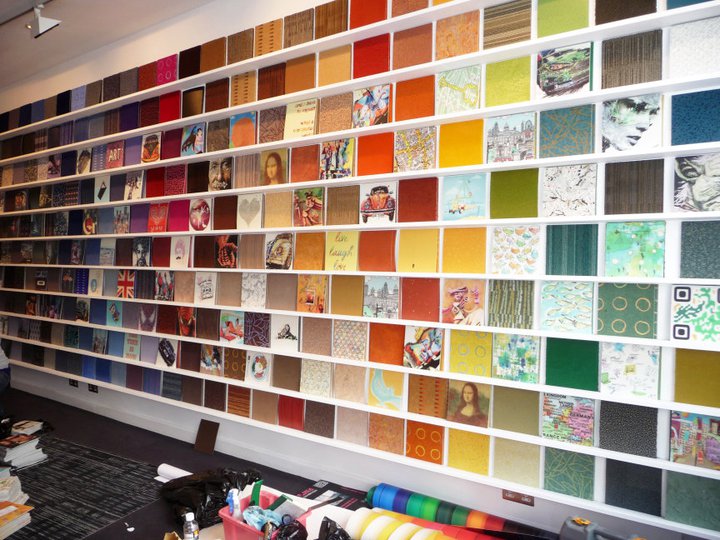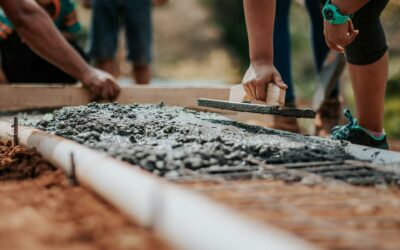Welcome to the Fascinating World of Linoleum Production!
Imagine yourself as a scientist who has discovered how to create a high-quality flooring material from simple raw materials, transforming any kitchen, bathroom, and even office into a stylish environment. Linoleum is not just a floor covering – it’s a piece of art under your feet.
Get ready to delve deep into the details of linoleum manufacturing. From the blend of linseed oil, wood flour, and resins to rolling and curing – we will examine each step with care. Prepare to discover the world of flooring in a new way.
Are you ready to immerse yourself in the world of linoleum production? Grab your notebook and pen, because things are about to get serious! We will guide you through the individual steps of this exciting process. From selecting sustainable raw materials to achieving the perfect surface – every step is carefully executed to create the high-quality linoleum that you might already have under your feet. So, without further delay, let’s unveil the secrets of linoleum production!
You may also like to read: Linoleum, a Key Material for Sustainable Architecture
The Magical Production of Linoleum: Step by Step
1. Selection of Raw Materials
Everything begins with the selection of natural, sustainable materials. The main components of linoleum are linseed oil, wood flour, and cork – all renewable resources that are biodegradable.
Linseed oil is derived from the seeds of the flax plant. This plant grows quickly and can be harvested annually, making it an extremely sustainable resource. Linseed oil is also biodegradable and does not cause environmental harm when decomposing.
Wood flour is a by-product of wood processing and consists of sawdust or wood waste. Using this waste not only reduces garbage but also optimizes resource usage. Wood flour is also biodegradable and decomposes naturally in the environment.
Cork is harvested from the bark of the cork oak, which can be regularly stripped without harming the tree. This makes cork a sustainable resource. After use, cork is completely biodegradable and leaves no harmful residues.
2. Cooking the Linseed Oil
Linseed oil is cooked using a special process to oxidize it and enhance its properties. The result is a viscous mass known as linoxyn. This procedure might sound like a witch’s ritual, but it is essential to form the foundation of the linoleum flooring.
3. Mixing the Components
Now comes the exciting part: mixing the ingredients. The oxidized linseed oil is combined with resins to create a sticky base. Next, wood flour and cork flour are added to thicken the mixture and give it structure. Limestone flour provides additional strength and durability. This mixture is processed into a homogeneous mass – the linoleum cement.
4. The Resting Phase
Like a good wine, linoleum cement needs time to mature. The mass is stored in containers and allowed to rest for several days to weeks. During this time, the cement hardens and reaches the perfect consistency for further processing.
5. The Calendering Process
After the resting phase, the linoleum cement is applied to a jute backing – the backbone of linoleum. This process is done through the calendering method, where the mass is pressed through large rollers. The result is a uniform, thin layer that will later be processed into linoleum sheets or tiles.
6. Drying
Before the linoleum is ready for use, it must be fully cured. This takes place in special drying chambers, where the material is dried under controlled conditions for several weeks. This step ensures that the linoleum is robust and durable, ready to withstand daily wear and tear.
7. Cutting and Surface Treatment
After drying, the linoleum is cut into the desired shapes and sizes. It then undergoes surface treatment to enhance its resistance and give it a beautiful sheen. Sometimes, an additional protective layer is applied to make maintenance and cleaning easier.

You may also like to read: Laying Linoleum | A Guide to Professional Installation
Sustainable Aspects of Linoleum Production
The production of linoleum is not only a fascinating process but also a prime example of sustainability in the industry. Here are some of the eco-friendly aspects:
Renewable Raw Materials: Linseed oil, wood flour, and cork are essential components of linoleum production and contribute significantly to the sustainability of this flooring.
These materials are not only renewable but also biodegradable, making them environmentally friendly options.
Biodegradability and environmental impact
The biodegradability of these materials means that they decompose naturally at the end of their useful life without harming the environment. This is in stark contrast to synthetic materials such as PVC, which are not biodegradable and can release pollutants in the long term.
The use of linseed oil, wood flour and cork in linoleum production not only reduces the ecological footprint, but also contributes to the circular economy, where materials can be returned to the natural cycle after use. This makes linoleum an environmentally friendly choice for flooring that combines sustainability and durability.
Low energy consumption: The production process requires comparatively little energy, especially when compared to synthetic floor coverings. The world’s most modern linoleum factory, operated by Forbo in the Netherlands, uses 100% renewable energy sources such as wind and solar power for its production.
This significantly reduces energy consumption and lowers CO2 emissions from production (Forbo). In comparison, the manufacturing process of vinyl is energy intensive, as the production of PVC and the processing of vinyl require a lot of energy and are often associated with high emissions of volatile organic compounds (AmbientBP) (PRO! Flooring).
Durability and recyclability: Linoleum is extremely durable and can be recycled at the end of its life. Low emissions: Hardly any harmful emissions are released during production, which improves air quality.
Overall, linoleum is an excellent choice for environmentally conscious consumers looking for sustainable and stylish flooring. And now that you know all the secrets of linoleum production, you can look at this little marvel of flooring art with pride!
Conclusion
And there you have it – the secrets of linoleum production revealed! From the selection of sustainable raw materials such as linseed oil, wood flour and cork to innovative, energy-efficient production methods, linoleum is a prime example of eco-friendly materials in sustainable architecture.
This journey through the manufacturing process shows that linoleum is not only a durable and versatile floor covering, but also an environmentally conscious choice that benefits both your home and the planet.
Now that you know how linoleum is produced and the sustainable benefits it offers, you can incorporate this sustainable and stylish option into your projects with a clear conscience.
So, get ready to revolutionise the world of architecture with a flooring that is not only aesthetically pleasing but also environmentally friendly. Welcome to the future of sustainable building!
You may also like to read: Four Sustainable Flooring Materials: Eco-friendly and Stylish Options for a Greener Future
Sources:
- Die Rohstoffe von Linoleum | Boden | _Linoleum | Baunetz_Wissen (baunetzwissen.de)
- DLW Linoleum: Natürliche und nachhaltige Bodenbeläge | Gerflor Objektbereich
- Marmoleum – Step into modern nature | Forbo Flooring Systems
- Linoleum – strapazierfähiger und langlebiger Bodenbelag | Tarkett
Images:
- Via Tarkett
- Via Green Goods USA
- Via Pixabay






0 Comments